Our Story
1960s | 1970s | 1980s | 1990s | 2000s | 2010s | 2020s
1960-1970
Birth of the Nature Conservancy of Canada

Burrowing owls (Photo by Don Dabbs)
1962 • Toronto, Ontario
In the early 1960s a plucky band of naturalists based in Ontario (led by J. Bruce Falls, Aird Lewis and Richard Pough) had a bold idea. Stung by the damage to the natural world they saw all around them, they launched a program to take direct, private action to protect natural spaces and promote conservation. At the time it was an audacious plan. It was also the birth of the Nature Conservancy of Canada.
Securement of NCC's first project: Cavan Swamp and Bog
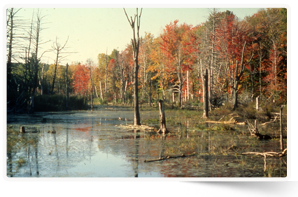
Cavan Swamp, ON (Photo by NCC)
1968 • Cavan, Ontario
NCC's first project was Cavan Swamp and Bog in Ontario — an exceptional complex of bogs and other wetlands covering about 1,340 hectares. The site is now the Cavan Swamp Wildlife Area and shelters an abundance of wildlife, including 22 species of orchids.
1970-1980
First property in Atlantic Canada: Sight Point
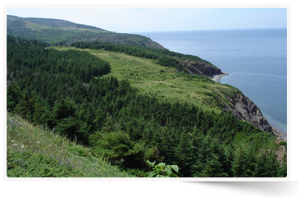
Sight Point, NS (Photo by NCC)
1971 • Cape Breton, Nova Scotia
The 1970s saw our work expanding across the country, with a donation of land at Sight Point, Cape Breton Island — our first project outside of Ontario, and the first in Atlantic Canada.
First property in British Columbia: Mud Bay
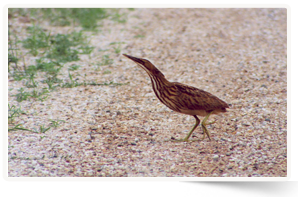
American Bittern, BC (Photo by NCC)
1974 • Surrey, British Columbia
NCC began working on the Mud Bay project — NCC's first conservation site in British Columbia. Today, the property is an Important Bird Area on the Pacific Flyway, with invertebrate-rich mudflats and eel-grass beds that are well used by large numbers of migrating shorebirds and waterfowl.
First project in Quebec: Un fleuve, Un parc
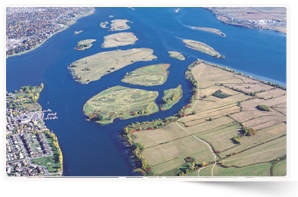
Un fleuve, Un parc, QC (Photo by Mark Tomalty)
1978 • Montreal, Quebec
By 1978, NCC had established a formal presence in Quebec as the Société canadienne pour la conservation de la nature. The "Un fleuve, Un parc" project, which aimed to conserve islands along a 70-kilometre stretch of the St. Lawrence River east of Montreal, became a model for NCC's landscape-scale approach to conservation.
First property in Manitoba: Brokenhead River Ecological Reserve
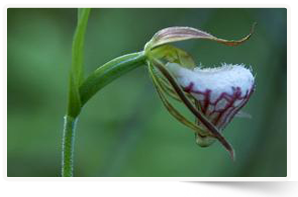
Ram's-head lady's slipper (Photo by John Neufeld)
1978 • Brokenhead Ojibway National Reserve, Manitoba
NCC began working on the Brokenhead River Ecological Reserve — our first project in Manitoba. Located northeast of Winnipeg and just south of and draining into Lake Winnipeg, this project conserved 64 hectares of rare floodplain mixed-wood forest dominated by ash, elm, oak and spruce, with a rich understory of wildflowers.
1980-1990
First property in Saskatchewan: Qu'Appelle Coulee
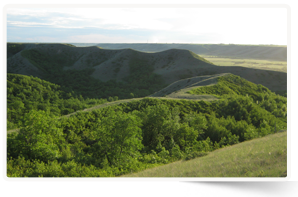
Qu'Appelle Coulee, SK (Photo by NCC)
1982 • Wolseley, Saskatchewan
In the early 1980s, NCC helped to secure a property known as the Qu'Appelle Coulee — our first project in Saskatchewan. This
64-hectare site near the town of Wolseley now conserves a fabulous steep-walled canyon, or coulee, up to 75 metres deep that was formed by erosion.
First project in Canada's North: Coal River Springs Ecological Reserve
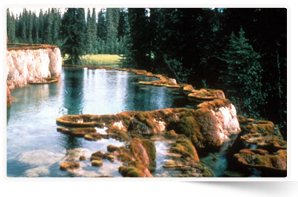
Coal River Springs, YT (Photo by NCC)
1989 • Coal River Springs, Yukon
The decade was rounded out with NCC's first project in Canada's North: Coal River Springs Territorial Park, a protected area of 1,600 hectares in the southeastern portion of the territory.
1990-2000
Work begins in The Tall Grass Prairie Preserve, Manitoba

Chantal Fortney on the tall grass prairie with a western prairie fringed orchid (Photo by Gene Fortney)
1992 • Gardenton, Manitoba
Today's Manitoba Tall Grass Prairie Preserve, an ongoing land assembly, is a result of decades of conservation partnerships established in the early 1990s, which aimed to conserve the largest surviving tracts of tall-grass prairie in Canada — an ecological community that supports a diverse suite of species at risk that depend on its rare habitats. Read more >
First property in Newfoundland & Labrador: King George IV Ecological Reserve
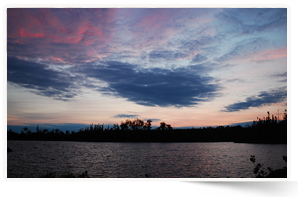
King George IV Ecological Reserve, NL (Photo by NCC)
1996 • Newfoundland & Labrador
The Nature Conservancy of Canada (NCC) has a rich history in helping conserve unique landscapes for future generations in Newfoundland and Labrador. NCC’s first land securement in the province was in 1996, with the King George IV Ecological Reserve, a 1,899-hectare project to see timber and mineral rights relinquished.
Old Man on His Back Prairie and Heritage Conservation Area, Saskatchewan
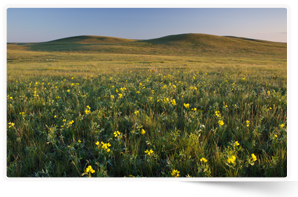
Old Man on His Back Ranch, SK (Photo by Branimir Gjetvaj)
1996 • Southwestern Saskatchewan
For a century, the Old Man on His Back property had been owned by the Butala family, who had carefully managed its natural values, maintaining almost all of it as native mixedgrass prairie. NCC officially took control of the property in 2001. Read more >
2000-2010
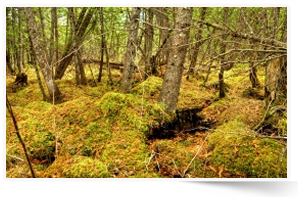
2001 • More than 1,000 properties conserved, from coast to coast.
Johnson's Mills Shorebird Reserve and Interpretive Centre, New Brunswick
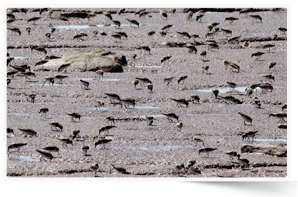
Semipalmated sandpipers at Johnson's Mills, NB (Photo by Mike Dembeck)
2000 • Johnson's Mills, New Brunswick
We also continued to diversify our conservation work with new initiatives such as our first public education and ecotourism centre at Johnson's Mills, New Brunswick — one of North America's most important stopovers for semipalmated sandpipers — allowing Canadians access to the annual migratory extravaganza while protecting habitat. Read more >
Reintroduction of plains bison to historic grazing grounds, Saskatchewan
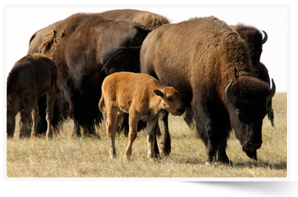
Plains bison, Old Man on His Back, SK (Photo by Karol Dabbs)
2003 • Old Man on His Back, Saskatchewan
In 2003, NCC reintroduced 50 plains bison to the 5,300 hectare mixed grass prairie at Old Man on His Back. Read more >
Conservation of the Waterton Park Front, Alberta
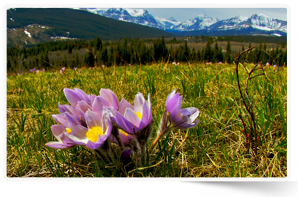
Prairie crocuses at Waterton, AB (Photo by Karol Dabbs)
2004 • Waterton, Alberta
We announced a significant private conservation initiative, in partnership with local ranchers and the Weston Family Foundation and the Poole Family: the 11,000-hectare Waterton Park Front Project in Alberta. Read more >
Launch of the Government of Canada's Natural Areas Conservation Program
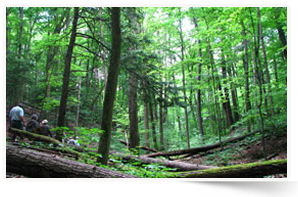
Hikers in Happy Valley Forest, ON (Photo by NCC)
March 7, 2007 • Happy Valley Forest, Ontario
We announced the largest commitment by any Canadian government to conserve private lands. Through the Natural Areas Conservation Program, the Government of Canada set aside $225 million for the protection of natural areas. Under the program, $185 million were directly invested in NCC's conservation program.
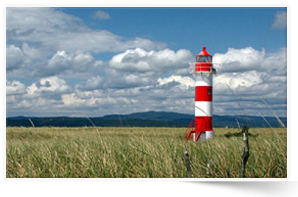
2008 • More than 800,000 hectares (2 million acres) conserved
The largest single private conservation initiative in Canadian history: Darkwoods
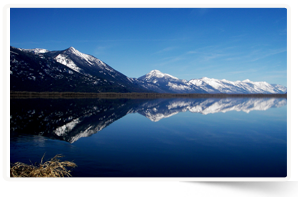
South Selkirk Mountains, BC (Photo by M. A. Beaucher)
2008 • Darkwoods, British Columbia
We announced what was, at the time, the largest single private conservation initiative in Canadian history: the spectacular Darkwoods in British Columbia. The 55,000-hectare property shelters a wide abundance of wildlife, including grizzly bear and wolverine. Pristine water from alpine lakes feeds into 17 separate watersheds. Forests whose diversity rivals any in British Columbia thrive here. Read more >
Second year of Natural Areas Conservation Program
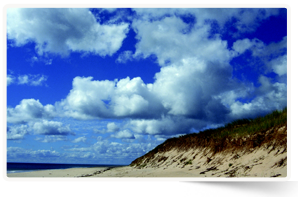
Basinhead Dunes, PEI (Photo by Douglas Leitch)
March 2009
As of March 2009, under this program nearly 340 properties totalling more than 103,660 hectares had been acquired.
2010-2020
Largest carbon credit program in North America
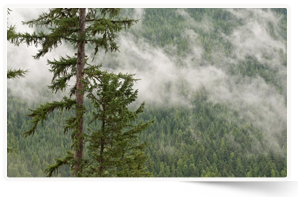
Western larch, Darkwoods, BC (Photo by Bruce Kirkby)
2011 • Darkwoods, British Columbia
We announce the largest forest carbon project to date in North America. Developed through a rigorous procedure involving numerous advisors, and meeting international standards, this sale of carbon credits is raising the bar for conservation in Canada and contributes in excess of $4 million for NCC's conservation work. Read more >
Announcement of NCC's partnership to help conserve the Flathead River Valley
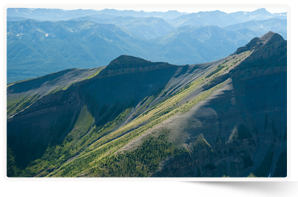
Flathead River Valley (Photo by Garth Lenz)
2011 • Flathead River Valley, British Columbia
NCC and The Nature Conservancy (U.S.) announce a multi-million dollar funding commitment to help remove major threats to British Columbia's Flathead River Valley — a spectacular wilderness area that straddles the Canada-U.S. border. The Flathead supports 70 mammal species (16 carnivores), 270 bird species, 25 fish species and 1,200 species of vascular plants.
Read more >
50th anniversary celebrations

50th anniversary logo
2012
From coast to coast, NCC celebrated 50 years of conservation successes with our partners and supporters.
Launch of the Moose Sex Project
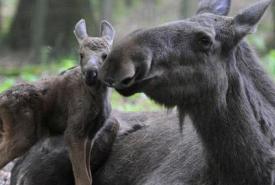
Moose and her calf (Photo courtesy of Wild for Wildlife and Nature)
2012
We launched our Moose Sex Project, which aims to protect habitat along the Chignecto Isthmus — a narrow band of land that connects Nova Scotia to the rest of Canada. Since species also cross borders and we are all interconnected, NCC is committed to conserving the long-term viability of wildlife populations not only in New Brunswick and Nova Scotia but across eastern Canada and the United States. Read more >
Renewal of the Natural Areas Conservation Program
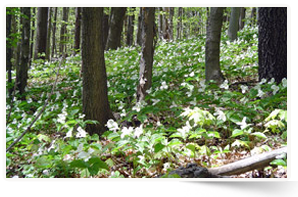
White trilliums in Happy Valley Forest, Ontario (Photo by NCC)
2014
On May 15, 2014, the Government of Canada committed to renewing the Natural Areas Conservation Program for another five years, with an additional $100-million investment.
Mapping the Big Land
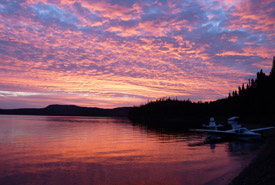
Namaycush Lake, Newfoundland and Labrador (Photo by Jon Feldgajer)
2014
After several years of collaboration, NCC and partners finished the Labrador Nature Atlas — a “one-stop biodiversity hub” for exploring, accessing and sharing information about Newfoundland and Labrador’s unique landscapes, plants and animals. Read more >
The Waldron Conservation Project
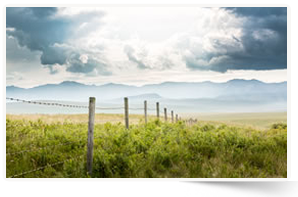
Waldron, AB (Photo by Kyle Marquardt, kylefoto.com)
2014
Many partners came together to conserve a provincial treasure for generations to come and help preserve Alberta's ranching heritage. The Waldron will continue to be prime habitat for numerous species, and an iconic landscape. Read more >
Conservation of the Kenauk Property
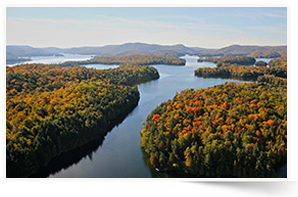
Kenauk, QC (Photo by Kenauk Nature)
2014
NCC and Kenauk Nature announced a partnership for the conservation of the vast 260-square-kilometre Kenauk property. The property once belonged to the famous Louis-Joseph Papineau. Read more >
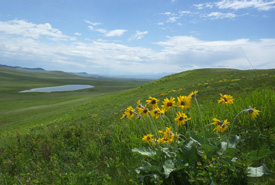
Conserving the Waldron (Photo by NCC)
2016 • more than 1.1 million hectares conserved
Conservation of the historic King Ranch
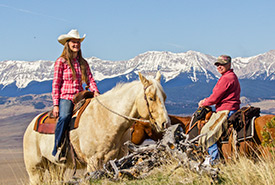
Waldron shareholders at the King Ranch (Photo by Karol Dabbs)
2016
NCC assisted the Waldron Grazing Co-operative in adding the very historic King Ranch to the largest conservation agreement in Canadian history. The conservation agreement on this significant stretch of working native grassland prevents further development in the area and will assist in the conservation of water quality, flood mitigation, and the maintenance of important watershed along Alberta’s southern foothills. It is also a wildlife corridor that facilitates the movement of large carnivores such as bears and cougars.
Tallurutiup Imanga/Lancaster Sound
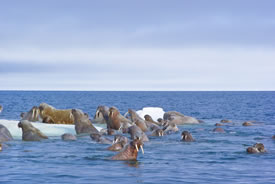
Walruses, Lancaster Sound (Photo by Mario Cyr)
2016
On June 8, 2016, the Nature Conservancy of Canada (NCC) announced a new collaboration to help accelerate a marine conservation initiative of global significance.
Turning over a new leaf
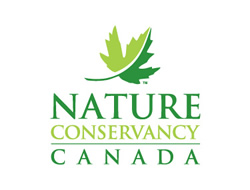
2016 • We rolled out NCC’s new visual identity.
Launching the Nature Destinations program
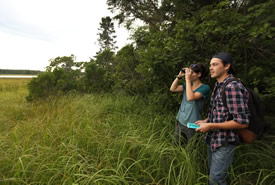
Pugwash Estuary, NS (Photo by Mike Dembeck)
2017
This new program, launched in July 2017, invited Canadians to connect with a suite of 20 properties from coast to coast. Each property has been specially selected to offer visitors the chance to experience the best of Canadian nature, with more properties slated to roll out in future years. Read more >
Tallurutiup Imanga/Lancaster Sound
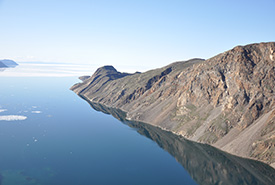
Inlet around Lancaster Sound, NU © Parks Canada/Diane Blanchard
2017
NCC and Shell Canada welcomed the news on August 14, 2017 of an agreement on a final boundary for a proposed national marine conservation area encompassing Tallurutiup Imanga/Lancaster Sound. When completed, it will be the largest marine conservation area in Canada.
Birch River Wildland Park
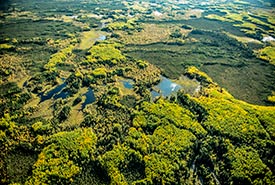
Birch River, AB (Photo by NCC)
2018
The Nature Conservancy of Canada (NCC) was proud to celebrate the protection of 3,300 square kilometres of boreal forest in northeast Alberta. When added to neighbouring conserved lands, the area now measures 67,000 square kilometres (6.7 million hectares) and forms the world's largest contiguous protected boreal forest, home to many species of conservation concern. Read more >
Tallurutiup Imanga National Marine Conservation Area

Walruses, Lancaster Sound (Photo by Mario Cyr)
2019
NCC congratulated the Qikiqtani Inuit Association and the Governments of Canada and Nunavut for the announcement of two new protected areas covering 427,000 square kilometres in the High Arctic. NCC especially welcomed the completion one of those areas, the Tallurutiup Imanga National Marine Conservation Area (NMCA), including a signed Inuit Impact and Benefit Agreement that will support nature and local communities. Read more >
Natural Heritage Conservation Program
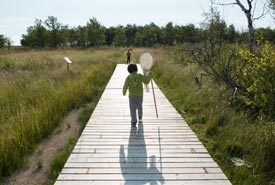
Prairie Orchid Trail, Manitoba (Photo by Thomas Fricke)
2019
In the spring of 2019, NCC and its partners applauded a new federally-funded $100-million program to safeguard important habitats for species at risk. The Natural Heritage Conservation Program will support privately protected areas in ecologically sensitive landscapes, from forests and endangered grasslands to wetlands and coastal regions. Read more >
Expansion of the largest private land conservation project in Canada
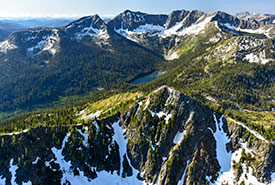
Next Creek watershed (Photo by Steve Ogle)
2019 • Next Creek, British Columbia
We announced the acquisition of 7,900 hectares of rare inland temperate rainforest in the South Selkirk Mountains. With the support of a broad range of funders, NCC purchased the large tract of private land, situated in the heart of its Darkwoods Conservation Area.
Growing our conservation impact
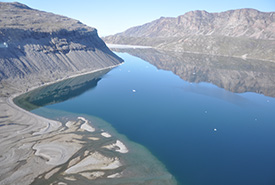
Pond Inlet, Lancaster Sound, NU © Parks Canada/Diane Blanchard
2019
NCC marked 14 million hectares conserved, coast to coast to coast, with the help of partners and supporters.
2020-2030
An Indigenous-led conservation effort succeeds in southeastern BC
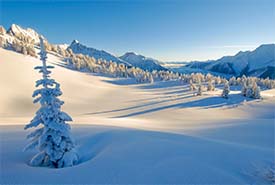
Jumbo, BC (Photo by Bruce Kirkby)
2020
NCC joined the Ktunaxa Nation, the Province of BC, the Government of Canada, community supporters and funding partners in Cranbrook to celebrate the long-sought termination of development rights in the Jumbo Valley, in BC’s Central Purcell Mountains. Read more >
Ontario Greenlands Conservation Partnership
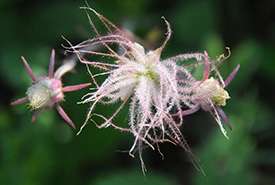
Prairie smoke, Cedarhurst, Carden Alvar, ON (Photo by William McIntyre)
April 2021
The announcement of a four-year $20-million investment from the Province of Ontario to protect nature is welcome news. This partnership advances private land conservation and affirms the Province’s commitment to protecting our lands and waters and the species that live there.
Doubling the rate of conservation
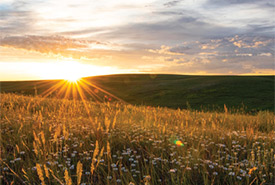
Buffalo Pound, SK (Photo by Jason Bantle)
2022
NCC and its partners doubled the pace of conservation in the last two years, and celebrated more than 15 million hectares conserved across the country.
Boreal Wildlands
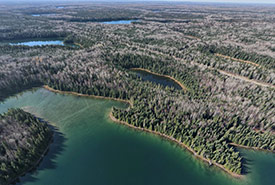
Boreal Wildlands, ON (Photo by NCC/Andrew Warren)
April 2022
Canada’s boreal forest spans 300 million hectares. NCC launched a fundraising initiative to protect and care for 1,450 square kilometres — known as the Boreal Wildlands — just south of Hearst, Ontario. At twice the size of the city of Toronto, its deep peatlands and vast forests capture and store carbon —keeping it out of the air we breathe.
Hastings
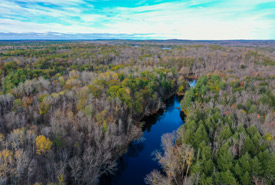
Hastings Wildlife Junction, ON. Photo by NCC.
March 2022
The Hastings Wildlife Junction, south of Bancroft, Ontario, boasts 8,000 hectares of significant forests and wetlands. A project of this magnitude and ecological significance is staggeringly rare in southern Ontario. To date, NCC has protected 5,000 hectares here, but there is more to be done.




